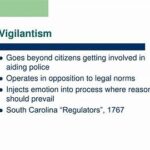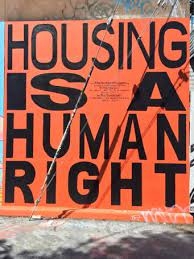Introduction
Vigilantism and citizen justice are phenomena deeply ingrained in the American psyche and history, reflecting a complex interplay of societal norms, legal frameworks, and individual agency. Defined broadly as the act of individuals or groups taking the law into their own hands to enforce perceived justice, vigilantism has manifested in various forms throughout American history, from the frontier justice of the Wild West to contemporary instances of online vigilantism and neighborhood watch programs. Despite the existence of a robust legal system, instances of vigilantism persist, raising critical questions about the legitimacy, ethics, and consequences of extrajudicial justice. This essay aims to explore the historical roots, contemporary manifestations, causes, consequences, and potential solutions to vigilantism and citizen justice in the USA, shedding light on this enduring aspect of American society.
Historical Overview
The roots of vigilantism in the USA can be traced back to the frontier justice of the Wild West era, where settlers formed vigilante groups to maintain order in lawless territories. These groups often bypassed official legal mechanisms, resorting to extrajudicial actions such as lynching and mob violence. Similarly, during the Civil Rights era, vigilante groups emerged, perpetrating acts of racial violence against minority communities in defiance of the law. While these historical manifestations of vigilantism may seem distant, they have left an indelible mark on the American consciousness, shaping contemporary attitudes towards justice and community policing.
Contemporary Examples of Vigilantism
In the modern era, vigilantism takes on diverse forms, ranging from neighborhood watch programs to online vigilantism facilitated by social media platforms. Neighborhood watch programs, ostensibly aimed at enhancing community safety, have sometimes resulted in tragic outcomes, such as the shooting of Trayvon Martin by George Zimmerman. Similarly, online vigilantism, exemplified by cancel culture, involves public shaming and ostracism of individuals deemed to have transgressed social norms. While these forms of vigilantism may differ in their methods and motivations, they share a common thread of individuals or groups taking justice into their own hands outside of established legal channels.
Causes of Vigilantism and Citizen Justice
The causes of vigilantism are multifaceted, reflecting underlying social, economic, and political dynamics. One significant factor is the perceived failures of the legal system to deliver swift and impartial justice. In communities plagued by crime and violence, residents may feel compelled to take matters into their own hands out of frustration with the perceived ineffectiveness of law enforcement. Moreover, social alienation, disenfranchisement, and economic marginalization can exacerbate feelings of powerlessness and distrust towards official institutions, further fueling the allure of vigilantism.

Additionally, media influences, including sensationalized portrayals of crime and justice, can shape public perceptions and attitudes towards vigilantism, legitimizing extrajudicial actions as a means of restoring order and asserting moral authority.
Legal and Ethical Considerations
The legality and ethics of vigilantism raise complex questions regarding the balance between individual rights and collective security. While some argue for the right of individuals to defend their communities in the face of perceived threats, others caution against the dangers of vigilantism undermining the rule of law and due process rights. The legitimacy of citizen arrests, the boundaries of self-defense, and the potential for vigilantism to escalate into vigilantism and mob violence are all critical considerations in evaluating the ethical and legal dimensions of extrajudicial justice. Moreover, the disproportionate impact of vigilantism on marginalized communities raises questions about equity, fairness, and social justice within the criminal justice system.
Consequences of Vigilantism
The consequences of vigilantism extend beyond immediate outcomes, permeating through society and exacerbating existing tensions and inequalities. Vigilantism can erode trust in official institutions, undermining the legitimacy of the legal system and exacerbating social divisions. Moreover, the potential for vigilantism to escalate into violence poses a significant threat to public safety and civil order, perpetuating cycles of retribution and retaliation. Additionally, the impact of vigilantism on individual rights and due process can have far-reaching implications for the protection of civil liberties and human rights within society.
Responses and Solutions
Addressing vigilantism requires a multifaceted approach that addresses underlying social, economic, and political factors while strengthening legal institutions and promoting community engagement. Strengthening law enforcement capabilities, improving access to justice, and enhancing public education on legal rights and responsibilities can help mitigate the underlying drivers of vigilantism. Moreover, fostering community policing initiatives, promoting dialogue and reconciliation, and empowering communities to address grievances through peaceful and constructive means can help build trust and resilience within society. By fostering a culture of accountability, transparency, and respect for the rule of law, communities can work towards preventing the emergence of vigilantism and promoting a more just and equitable society.

Historical Overview
The history of vigilantism in the USA is rich and complex, spanning from the early days of colonization to the present day. During the frontier era of the 19th century, settlers faced lawless conditions in newly established territories, leading to the formation of vigilante groups as a response to perceived threats to their safety and property. These groups often operated outside of formal legal structures, administering swift and often brutal justice to maintain order in the absence of established law enforcement agencies.
Moreover, the Civil Rights era witnessed the emergence of vigilante groups such as the Ku Klux Klan, which targeted African Americans and other minority groups with acts of violence and intimidation. These groups operated under the guise of upholding racial purity and maintaining social order, perpetrating atrocities against marginalized communities with impunity.
Contemporary Examples of Vigilantism
In contemporary society, vigilantism takes on various forms, reflecting the evolving dynamics of social, technological, and cultural change. Neighborhood watch programs, which gained prominence in the latter half of the 20th century, represent one such manifestation of vigilantism. While intended to enhance community safety and cohesion, these programs have been criticized for fostering a culture of suspicion and mistrust, particularly towards minority populations who are disproportionately targeted and profiled.

Furthermore, the rise of social media has facilitated new forms of vigilantism, exemplified by the phenomenon of online shaming and cancel culture. Individuals accused of wrongdoing, often without due process or evidence, can face severe repercussions, including loss of employment, social ostracism, and even threats of violence. While social media platforms provide a powerful tool for mobilizing public opinion and holding individuals accountable, they also raise concerns about the potential for abuse and mob mentality.
Causes of Vigilantism and Citizen Justice
The causes of vigilantism are deeply rooted in societal inequalities, institutional failures, and cultural norms that shape attitudes towards justice and authority. In communities plagued by crime and violence, residents may feel abandoned by official law enforcement agencies, leading them to take matters into their own hands out of a sense of desperation and fear. Moreover, socioeconomic disparities and systemic injustices can exacerbate feelings of powerlessness and alienation, driving individuals towards vigilantism as a means of asserting control and agency in their lives.
Furthermore, media representations of crime and justice play a significant role in shaping public perceptions and attitudes towards vigilantism. From sensationalized news coverage to fictional portrayals of vigilante heroes, the media often glorifies extrajudicial actions as heroic and justifiable, legitimizing vigilantism as a legitimate response to perceived threats to community safety and well-being.
Legal and Ethical Considerations
The legality and ethics of vigilantism raise complex questions about the balance between individual rights and collective security, as well as the legitimacy of extrajudicial actions in a democratic society. While proponents of vigilantism argue for the right of individuals to defend themselves and their communities against crime and injustice, critics caution against the dangers of vigilantism undermining the rule of law and due process rights. Moreover, the potential for vigilantism to escalate into violence and mob rule poses significant risks to public safety and civil order, threatening the very foundations of democratic governance and social cohesion.

Furthermore, the disproportionate impact of vigilantism on marginalized communities raises questions about equity, fairness, and social justice within the criminal justice system. Individuals from minority backgrounds are more likely to be targeted and victimized by vigilantism, reflecting broader patterns of systemic discrimination and bias within society.
Consequences of Vigilantism
The consequences of vigilantism extend far beyond immediate outcomes, permeating through society and exacerbating existing tensions and inequalities. Vigilantism can erode trust in official institutions, undermining the legitimacy of the legal system and exacerbating social divisions along racial, ethnic, and socioeconomic lines. Moreover, the potential for vigilantism to escalate into violence poses a significant threat to public safety and civil order, perpetuating cycles of retribution and retaliation that undermine the very foundations of democratic governance and social cohesion.
Additionally, the impact of vigilantism on individual rights and due process can have far-reaching implications for the protection of civil liberties and human rights within society. Individuals accused of wrongdoing may face severe repercussions, including loss of livelihood, social ostracism, and even physical harm, without due process or evidence to support their guilt. Furthermore, the stigmatization and marginalization of certain groups within society can perpetuate cycles of injustice and inequality, further entrenching patterns of discrimination and bias within the criminal justice system.
Responses and Solutions
Addressing vigilantism requires a multifaceted approach that addresses underlying social, economic, and political factors while strengthening legal institutions and promoting community engagement. Strengthening law enforcement capabilities, improving access to justice, and enhancing public education on legal rights and responsibilities can help mitigate the underlying drivers of vigilantism.

Moreover, fostering community policing initiatives, promoting dialogue and reconciliation, and empowering communities to address grievances through peaceful and constructive means can help build trust and resilience within society. By fostering a culture of accountability, transparency, and respect for the rule of law, communities can work towards preventing the emergence of vigilantism and promoting a more just and equitable society.
Conclusion
In conclusion, vigilantism and citizen justice represent enduring challenges to the rule of law and social cohesion in the USA. By understanding the historical roots, contemporary manifestations, causes, consequences, and potential solutions to vigilantism, society can work towards fostering a more just and equitable system of justice. Only through concerted efforts to address the underlying factors driving vigilantism can the USA move towards a more inclusive and resilient society.


